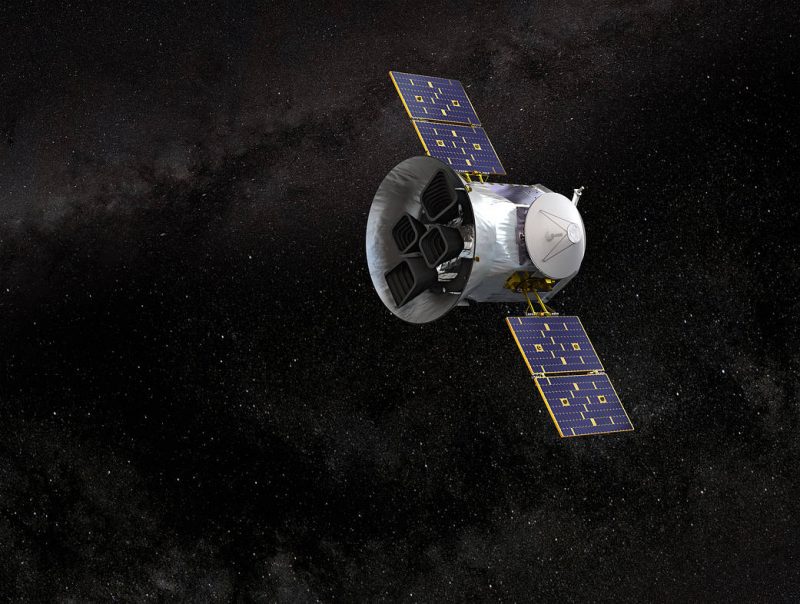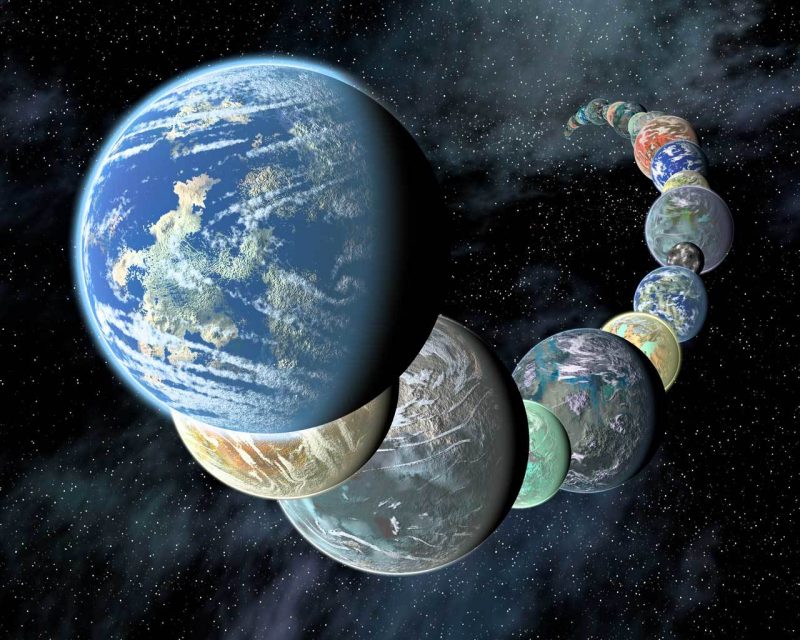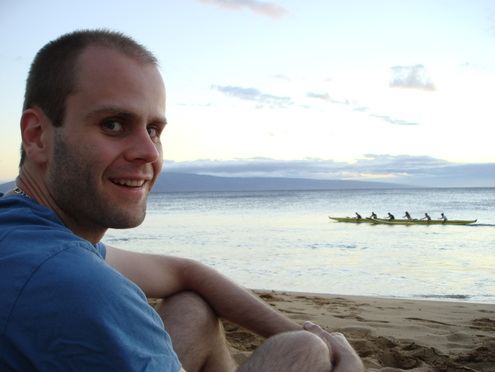
Have you ever wanted to help scientists find exoplanets, worlds orbiting distant stars? Well, now’s your chance! NASA has just launched a new citizen science website called Planet Patrol, a collaboration between NASA, the SETI Institute, the Space Telescope Science Institute, and Zooniverse. Volunteers will assist astronomers by looking through images taken by the Transiting Exoplanet Survey Satellite (TESS), NASA’s newest planet-hunter, which was launched in 2018.
As described on the Planet Patrol website:
NASA’s Transiting Exoplanet Survey Satellite (TESS) mission will take pictures of more than a million stars to search for planets orbiting them, called ‘transiting exoplanets.’ We expect this mission will see thousands of these transiting exoplanets when they pass in front of nearby stars and periodically block some of the starlight.
But sometimes when a star dims like that, it’s not because of a planet. Variable stars, eclipsing binary stars, blended stars, glitches in the data, etc., can cause a similar effect. We need your help to spot these imposters!
At Planet Patrol, you’ll help us check the data from the TESS mission, one image at a time, to make sure that objects we suspect are planets REALLY are planets.

Artist’s illustration of TESS. Planet Patrol uses data from the space telescope to search for exoplanets orbiting far-away stars. Image via NASA/ Goddard Space Flight Center.
The objective is twofold: search for planetary candidates in the data, as well as planetary imposters, other objects or phenomena that could be mimicking a planet. Project leader Veselin Kostov of NASA’s Goddard Space Flight Center said in a statement:
Automated methods of processing TESS data sometimes fail to catch imposters that look like exoplanets. The human eye is extremely good at spotting such imposters, and we need citizen scientists to help us distinguish between the look-alikes and genuine planets.
This also explains why human volunteers (3,968 at the time of this writing!) are needed in the first place. TESS collects a lot of data, hundreds of thousands of images in a year. Since – according to scientists – most stars have planets, each image could contain thousands of unseen planets. When you multiply that by the thousands of images, it becomes a daunting task to try to find the stars where planets are transiting in front of them, from our viewpoint (keeping in mind that many planets will have orbits that don’t transit). Computers can detect many or even most of such transits, but they are not perfect. This is especially true for smaller planets, like Earth, in larger orbits far out from their stars.

Scientists have discovered over 4,000 exoplanets so far, of many different kinds, as represented in this artist’s concept. With the public’s help, they should find many more as well. Image via NASA/ JPL-Caltech/ R. Hurt (SSC-Caltech).
The Planet Patrol volunteers will help find the planets that the computer algorithms miss, but they will also assist with something just as valuable: weeding out false positives. Sometimes, what appears to be a planet transiting its star isn’t actually a planet at all. Other possibilities include binary star systems, where two stars orbit each other around their common center of mass, and so alternately eclipse each other periodically. Other times, what seems to be a transit is actually just changes in brightness of a star itself. Still another kind of false alarm is simply errors or quirks in the observing instruments themselves.
All of those possibilities need to be eliminated before a candidate planet can actually be declared a confirmed discovery.
It can be tricky, of course, separating the real planets from the false ones, but on the new website, volunteers can ask questions about each image they study. This helps the TESS team narrow down the list of potential planets to the ones that are the most promising. There’s also the Planet Patrol Talk community where participants can discuss their findings with each other as well. As Marc Kuchner, Citizen Science Officer for NASA’s Science Mission Directorate, described the process:
We’re all swimming through the same sea of data, just using different strokes. Planet Hunters TESS asks volunteers to look at light curves, which are graphs of stars’ brightness over time. Planet Patrol asks them to look at the TESS image directly, although we plan to also include light curves for those images in the future.

Veselin Kostov of NASA’s Goddard Space Flight Center, Project Leader at Planet Patrol. Image via
Veselin B. Kostov.
Over 4,000 exoplanets have been discovered so far in our galaxy, ranging from scorching hot Jupiters to smaller and cooler rocky worlds like Earth. Astronomers now estimate that almost every star has at least one planet and that the total number of planets may outnumber the stars in our galaxy. That’s a staggering thought.
Planet Patrol is not only a new way to help find distant worlds that might otherwise be missed; it is also a great way for the public to become involved and engaged. There are still many planetary candidates from TESS to be examined, and TESS is expected to find thousands more, so this is a great time to learn how to go planet-hunting.
Bottom line: NASA has launched a new website called Planet Patrol where volunteers can help search for exoplanets.
from EarthSky https://ift.tt/2SGLajG

Have you ever wanted to help scientists find exoplanets, worlds orbiting distant stars? Well, now’s your chance! NASA has just launched a new citizen science website called Planet Patrol, a collaboration between NASA, the SETI Institute, the Space Telescope Science Institute, and Zooniverse. Volunteers will assist astronomers by looking through images taken by the Transiting Exoplanet Survey Satellite (TESS), NASA’s newest planet-hunter, which was launched in 2018.
As described on the Planet Patrol website:
NASA’s Transiting Exoplanet Survey Satellite (TESS) mission will take pictures of more than a million stars to search for planets orbiting them, called ‘transiting exoplanets.’ We expect this mission will see thousands of these transiting exoplanets when they pass in front of nearby stars and periodically block some of the starlight.
But sometimes when a star dims like that, it’s not because of a planet. Variable stars, eclipsing binary stars, blended stars, glitches in the data, etc., can cause a similar effect. We need your help to spot these imposters!
At Planet Patrol, you’ll help us check the data from the TESS mission, one image at a time, to make sure that objects we suspect are planets REALLY are planets.

Artist’s illustration of TESS. Planet Patrol uses data from the space telescope to search for exoplanets orbiting far-away stars. Image via NASA/ Goddard Space Flight Center.
The objective is twofold: search for planetary candidates in the data, as well as planetary imposters, other objects or phenomena that could be mimicking a planet. Project leader Veselin Kostov of NASA’s Goddard Space Flight Center said in a statement:
Automated methods of processing TESS data sometimes fail to catch imposters that look like exoplanets. The human eye is extremely good at spotting such imposters, and we need citizen scientists to help us distinguish between the look-alikes and genuine planets.
This also explains why human volunteers (3,968 at the time of this writing!) are needed in the first place. TESS collects a lot of data, hundreds of thousands of images in a year. Since – according to scientists – most stars have planets, each image could contain thousands of unseen planets. When you multiply that by the thousands of images, it becomes a daunting task to try to find the stars where planets are transiting in front of them, from our viewpoint (keeping in mind that many planets will have orbits that don’t transit). Computers can detect many or even most of such transits, but they are not perfect. This is especially true for smaller planets, like Earth, in larger orbits far out from their stars.

Scientists have discovered over 4,000 exoplanets so far, of many different kinds, as represented in this artist’s concept. With the public’s help, they should find many more as well. Image via NASA/ JPL-Caltech/ R. Hurt (SSC-Caltech).
The Planet Patrol volunteers will help find the planets that the computer algorithms miss, but they will also assist with something just as valuable: weeding out false positives. Sometimes, what appears to be a planet transiting its star isn’t actually a planet at all. Other possibilities include binary star systems, where two stars orbit each other around their common center of mass, and so alternately eclipse each other periodically. Other times, what seems to be a transit is actually just changes in brightness of a star itself. Still another kind of false alarm is simply errors or quirks in the observing instruments themselves.
All of those possibilities need to be eliminated before a candidate planet can actually be declared a confirmed discovery.
It can be tricky, of course, separating the real planets from the false ones, but on the new website, volunteers can ask questions about each image they study. This helps the TESS team narrow down the list of potential planets to the ones that are the most promising. There’s also the Planet Patrol Talk community where participants can discuss their findings with each other as well. As Marc Kuchner, Citizen Science Officer for NASA’s Science Mission Directorate, described the process:
We’re all swimming through the same sea of data, just using different strokes. Planet Hunters TESS asks volunteers to look at light curves, which are graphs of stars’ brightness over time. Planet Patrol asks them to look at the TESS image directly, although we plan to also include light curves for those images in the future.

Veselin Kostov of NASA’s Goddard Space Flight Center, Project Leader at Planet Patrol. Image via
Veselin B. Kostov.
Over 4,000 exoplanets have been discovered so far in our galaxy, ranging from scorching hot Jupiters to smaller and cooler rocky worlds like Earth. Astronomers now estimate that almost every star has at least one planet and that the total number of planets may outnumber the stars in our galaxy. That’s a staggering thought.
Planet Patrol is not only a new way to help find distant worlds that might otherwise be missed; it is also a great way for the public to become involved and engaged. There are still many planetary candidates from TESS to be examined, and TESS is expected to find thousands more, so this is a great time to learn how to go planet-hunting.
Bottom line: NASA has launched a new website called Planet Patrol where volunteers can help search for exoplanets.
from EarthSky https://ift.tt/2SGLajG

Aucun commentaire:
Enregistrer un commentaire